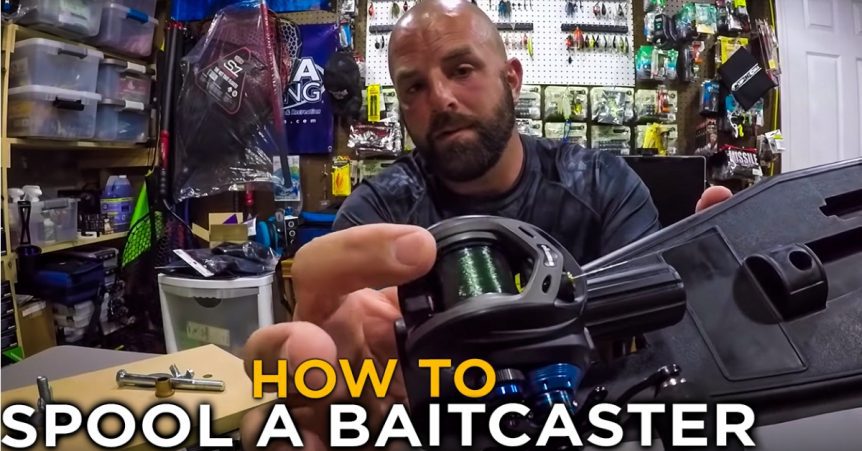How To Spool A Baitcaster: A Beginner’s First Steps
A baitcast reel is the hardest reel for a beginner to learn to cast without backlashing. However, beginners will be glad to know that it is much easier to spool line on a baitcaster than on a spinning or spincast reel.
The main consideration when spooling a baitcaster is the line size and type of line you will be adding to the reel. If you plan on spooling 20-pound test on your reel, the line is thicker so you will be putting less line to fill up the spool than you would if you were spooling thinner 10-pound test.
You can tie monofilament or fluorocarbon directly to the spool and start filling the reel, but braided line slips too much when tied directly to the spool so you will need some type of backing to prevent this slippage. I usually fill the reel with a couple of yards of old monofilament for backing and then connect the monofilament and braid with an Albright knot before spooling on the braid.

The first step I employ when spooling a baitcast reel is to pass my line through all of the rod guides and then through the reel’s level wind guide. Passing the line through all of the rod guides helps put more tension on the line while spooling which prevents loops from forming in the spool. Next, I wrap the line around the spool and tie an overhand knot around the line. I complete an arbor knot by tying an overhand knot on the line’s tag end and then pull the main line until both knots tighten to the spool. I trim the tag end as close as I can to the knot before I start reeling in line.

While reeling line onto the spool I keep tension on the line by running it between my thumb and forefinger on my hand holding the rod. I make sure my line comes off of the filler spool the same way it loads onto the baitcast reel to prevent line twists that can cause casting problems later. So I want my filler spool to feed line off the top because the reel spool takes in line from the bottom of its turn.



